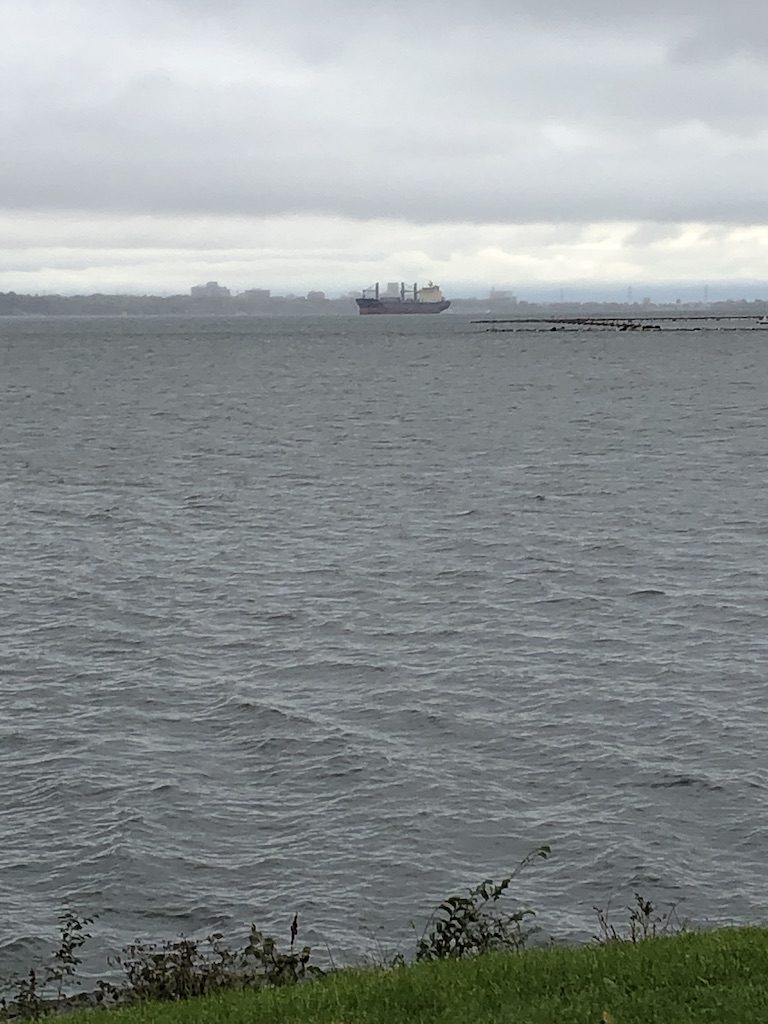I attended a talk the other night with one of the youth, Denise, that was aimed at addressing the plastics problems in Hamilton, Ont. Delivered by a knowledgeable lady (from an organization that I won’t name), we were provided some interesting information about the statistics of the plastic problem that is plaguing Hamilton (and many other cities across Canada and worldwide). In March 2019, the City of Hamilton officially declared a climate emergency. Concerns regarding the amount of plastics, namely, single-use plastics, that have ended up in the city’s landfills were identified as a large concern. The lady went on to discuss some statistics of “trash” that is accumulated at home that can’t be recycled like large Styrofoam from carefully packaged Tv’s, Styrofoam peanuts from packing, black plastic from take-out containers, energy drinks, and disposable teacups and lids, among other things. She then identified some policies within Canada aimed at banning single-use plastics by 2021 under the Federal Environmental Protection Act. She acknowledged, however, that this ban was something put in place by the federal government, and in order for it to be successful, provincial governments need to also enact their own laws and sanctions. At the local level in Hamilton, a proposal was put forth to explore bi-weekly garbage pick-up (instead of weekly pick-up) and to continue with the normal weekly recycle pickup. She identified a few arguments in support of bi-weekly garbage pickup that claim that, 1) garbage trucks are gas guzzlers and switching to bi-weekly pickup will limit the amount of gasoline used which will also save a lot of money, 2) residents will be more likely to utilize their recycling and green bin during this time to lessen the amount of waste needing to be stored between pickups and also lessening the smell from perhaps organic materials that should be composted, and 3) through residents utilizing their recycling and green bins, in the end, more waste will be diverted away from the landfills.
During the presentation, other ways were discussed on how at a personal level, we can reduce our own use of single-use plastics. There were suggestions for bringing our own bags to the grocery store, using reusable, resealable lunch and snack bags, buying reusable straws, reusable wrap and attempting, where possible, to buy items with less packaging. I heard whispers coming from behind me of some older women claiming that over the past four months, they only collected one garbage bag of “trash”, and that they always brought their reusable bags with them when they shopped. Others talked about their reusable straws and bringing their own bottles or take-out containers when they went to buy food or ate at restaurants.
After the presentation, Denise and I talked about aspects of the presentation that we found interesting. The first thing we both noted was that the presenter, and the majority of the people attending the talk all came from white, middle class backgrounds. We dove deep into a conversation about the “plastics divide”, and how it may be easier (financially speaking) for those who come from more financially stable backgrounds to be able to afford reusable items that aren’t cheap (like silicone lunch and snack bags, beeswax wrap, etc.). We then thought further about the intersections with race, location, socioeconomic background, gender, and politics that are implicated in the plastic problem. What about people from disadvantaged backgrounds who may not be able to afford reusable products? We thought about the single parent, or low-income families who for the sake of convenience, time, and money purchase prepared meals or TV dinners? It seemed that this reflection was missing from the discussion on the plastics problems in Hamilton.
Furthermore, when thinking about “waste” products that make their way into the landfills, there are ways in which gender is unequally called into practice. Feminine hygiene products are one example of how other unnecessary plastics from tampon applicators and materials used to make maxi pads make their way into landfills and into the water. While alternative methods have been created to help address these concerns including silicone “cups”, these products are more expensive, further entangling socioeconomic status and gender in the plastic divide.
All in all, it was an informative presentation and we both acknowledged that at minimum, conversations regarding plastics in the water are starting to be addressed locally within the community. If we had to sum-up the night with one question it would be this: In what ways are socioeconomic status, gender, race, and politics called unequally into the plastics crisis? And, how can these intersections be effectively addressed in any municipal or provincial sanctions or laws that come into effect?
























